เคทีซีเผยผลประกอบการของบริษัทและบริษัทย่อยในปี 2566 กำไรสุทธิ 7,295 ล้านบาท เพิ่มขึ้น 3.1% จากงวดเดียวกันของปี 2565 พอร์ตสินเชื่อรวมมีมูลค่า 112,346 ล้านบาท ขยายตัว 7.8% จากช่วงเดียวกันของปี 2565 อานิสงส์จากสภาวะเศรษฐกิจไทยที่ทยอยฟื้นตัว ประกอบกับปัจจัยสนับสนุนจากการบริโภคภาคเอกชน โดยแผนกลยุทธ์ธุรกิจในปีนี้ จะยังคงมุ่งเน้นพอร์ตสินเชื่อให้เติบโตอย่างยั่งยืน ควบคู่กับการควบคุมคุณภาพพอร์ตสินเชื่อ คัดกรองลูกหนี้ภายใต้ระดับความเสี่ยงที่เหมาะสมและยอมรับได้ รวมทั้งเดินหน้ามาตรการให้ความช่วยเหลือลูกหนี้ระยะยาวตามประกาศของธนาคารแห่งประเทศไทย (ธปท.) อีกทั้งบริหารจัดการให้สินเชื่ออย่างเป็นธรรม โดยให้ความช่วยเหลือลูกหนี้ทุกสถานะตามแนวทางของธปท. เป็นจำนวนเงิน 1,833 ล้านบาท เมื่อสิ้นปี 2566

นางพิทยา วรปัญญาสกุล ประธานเจ้าหน้าที่บริหาร “เคทีซี” หรือ บริษัท บัตรกรุงไทย จำกัด (มหาชน) กล่าวว่า “ภาพรวมของอุตสาหกรรมสินเชื่อผู้บริโภคยังขยายตัว จากความต้องการใช้จ่ายเพื่อการบริโภคและความเชื่อมั่นของผู้บริโภคยังคงอยู่ในระดับดี โดยเคทีซีมีสัดส่วนของลูกหนี้บัตรเครดิตเทียบกับอุตสาหกรรมสำหรับ 11 เดือน ปี 2566 เท่ากับ 15.1% ส่วนแบ่งตลาดของปริมาณการใช้จ่ายผ่านบัตรของบริษัทเท่ากับ 12.2% เพิ่มขึ้นจากช่วงเดียวกันของปี 2565 และมีสัดส่วนของลูกหนี้สินเชื่อบุคคล (ไม่รวมสินเชื่อที่มีทะเบียนรถเป็นประกัน) เทียบกับอุตสาหกรรมเท่ากับ 6.3%”
“ในปี 2566 เคทีซีมีอัตราการขยายตัวของปริมาณการใช้จ่ายผ่านบัตรที่ 11.4% โดยมูลค่าพอร์ตสินเชื่อรวมขยายตัวที่ 7.8% พอร์ตบัตรเครดิตเคทีซียังขยายตัวได้ที่ 7.2% ตามปริมาณการใช้จ่ายผ่านบัตรที่เพิ่มขึ้นจากอุปสงค์การใช้จ่ายในชีวิตประจำวัน ขณะที่พอร์ตสินเชื่อบุคคลรวมขยายตัวที่ 7.5% โดยบัตรกดเงินสด “เคทีซี พราว” (KTC PROUD) เติบโต 4.4% และยอดลูกหนี้ใหม่ “เคทีซี พี่เบิ้ม รถแลกเงิน” มีมูลค่า 2,590 ล้านบาท”
“ผลการดำเนินงานของเคทีซี ณ วันที่ 31 ธันวาคม 2566 เปรียบเทียบกับช่วงเดียวกันของปี 2565 งบการเงินรวมปี 2566 กำไรสุทธิ 7,295 ล้านบาท เพิ่มขึ้น 3.1% มีฐานสมาชิกรวม 3,358,926 บัญชี เงินให้สินเชื่อแก่ลูกหนี้และดอกเบี้ยค้างรับรวมหรือพอร์ตสินเชื่อรวมมีมูลค่าเท่ากับ 112,346 ล้านบาท เติบโต 7.8% อัตราส่วนสินเชื่อด้อยคุณภาพต่อเงินให้สินเชื่อรวมของกลุ่มบริษัท (%NPL) อยู่ที่ 2.2% โดยแบ่งเป็นพอร์ตสมาชิกบัตรเครดิต 2,637,183 บัตร เงินให้สินเชื่อแก่ลูกหนี้บัตรเครดิตและดอกเบี้ยค้างรับรวม 74,441 ล้านบาท ปริมาณการใช้จ่ายผ่านบัตรในปี 2566 เท่ากับ 265,383 ล้านบาท เพิ่มขึ้น 11.4% NPL บัตรเครดิตอยู่ที่ 1.1% พอร์ตสมาชิกสินเชื่อบุคคลเคทีซี 721,743 บัญชี แบ่งเป็นเงินให้สินเชื่อแก่ลูกหนี้บัตรกดเงินสด “เคทีซี พราว” และดอกเบี้ยค้างรับ 30,597 ล้านบาท เงินให้สินเชื่อแก่ลูกหนี้ “เคทีซี พี่เบิ้ม รถแลกเงิน” เท่ากับ 2,287 ล้านบาท NPL สินเชื่อบุคคลอยู่ที่ 3.0% สำหรับสินเชื่อลูกหนี้ตามสัญญาเช่าซื้อมูลค่า 3,189 ล้านบาท เคทีซีได้หยุดการปล่อยสินเชื่อประเภทนี้ตั้งแต่เดือนสิงหาคม 2566 เพื่อบริหารจัดการคุณภาพพอร์ตสินเชื่อและการติดตามหนี้ เนื่องจากเห็นสัญญาณของหนี้เสียที่เพิ่มขึ้น”
เคทีซีมีรายได้รวมเพิ่มขึ้นจากช่วงเดียวกันของปี 2565 เท่ากับ 9.4% จากรายได้ดอกเบี้ยและรายได้ค่าธรรมเนียม ขณะที่ค่าใช้จ่ายรวมเพิ่มขึ้น 14.0% จากค่าใช้จ่ายในการบริหารหลักๆ เพิ่มขึ้น ค่าธรรมเนียมจ่ายจากปริมาณธุรกรรมที่ขยายตัว ผลขาดทุนด้านเครดิตที่คาดว่าจะเกิดขึ้น (ECL) เพิ่มขึ้นจากการตั้งสำรองสูงขึ้น และต้นทุนทางการเงินที่ปรับขึ้นตามการเพิ่มขึ้นของอัตราดอกเบี้ยในตลาดการเงิน
ทั้งนี้ ข้อมูลวันที่ 31 ธันวาคม 2566 กลุ่มบริษัทมีเงินกู้ยืมทั้งสิ้น 66,404 ล้านบาท เพิ่มขึ้น 7.7% เทียบจากช่วงเวลาเดียวกันของปีก่อนหน้า แบ่งสัดส่วนโครงสร้างแหล่งเงินทุนเป็นเงินกู้ยืมระยะสั้น (รวมส่วนของเงินกู้ยืมและหุ้นกู้ที่ครบกำหนด
ชำระภายในหนึ่งปี) 32.9% และเงินกู้ยืมระยะยาว 67.1% วงเงินกู้ยืมระยะสั้นจากสถาบันการเงินรวม (Total Short-Term Credit Line) ทั้งสิ้นจำนวน 29,371 ล้านบาท (รวมวงเงินจากธนาคารกรุงไทย 19,061 ล้านบาท) ใช้วงเงินระยะสั้นไปจำนวน 4,981 ล้านบาท มีวงเงินคงเหลือทั้งสิ้น 24,390 ล้านบาท อัตราส่วนของหนี้สินต่อส่วนของผู้ถือหุ้นอยู่ที่ 2.15 เท่า ลดลงเมื่อเทียบกับสิ้นปีก่อนหน้าที่ 2.22 เท่า ต่ำกว่าภาระผูกพัน (Debt Covenants) ที่ 10 เท่า ในปี 2566 เคทีซีมีต้นทุนทางการเงินเท่ากับ 2.7% เพิ่มขึ้นจาก 2.4% ในปี 2565 ตามสภาวะอัตราดอกเบี้ยของตลาดที่เพิ่มขึ้น ขณะเดียวกันผลตอบแทนเงินให้สินเชื่อเท่ากับ 14.8% เพิ่มขึ้นจากปีก่อนหน้าที่ 14.6% จากการเติบโตของพอร์ตรวม ส่งผลให้ส่วนต่างอัตราดอกเบี้ยสุทธิในปี 2566 อยู่ในระดับเดิมที่ 13.2%
“ในปี 2567 นี้ หลายฝ่ายคาดการณ์ว่าอัตราการขยายตัวของเศรษฐกิจจะปรับดีขึ้น ตามการขยายตัวของภาคการส่งออกและการฟื้นตัวต่อเนื่องของภาคการท่องเที่ยว จึงน่าจะเป็นแรงส่งให้การบริโภคภาคเอกชนขยับตัวและมีการใช้จ่ายเพิ่มมากขึ้น โดยเคทีซีตั้งเป้าหมายจะมีผลการดำเนินงานที่ดีขึ้นอย่างต่อเนื่อง ควบคู่กับการดูแลพอร์ตลูกหนี้รวมให้ขยายตัวมากขึ้น ภายใต้ความเสี่ยงที่ยอมรับได้อย่างเหมาะสม และตั้งเป้าเติบโตใน 3 ธุรกิจหลัก คือ ธุรกิจบัตรเครดิต สินเชื่อบัตรกดเงินสด “เคทีซี พราว” (KTC PROUD) และสินเชื่อ “เคทีซี พี่เบิ้ม รถแลกเงิน” อีกทั้งจะส่งเสริมธุรกิจ “มาย บาย เคทีซี” (MAAI by KTC) ซึ่งให้บริการระบบบริหารจัดการความสัมพันธ์กับลูกค้า ให้ขยายตัวมากขึ้น ร่วมกับการพัฒนา 3 องค์ประกอบหลัก คือ คน กระบวนการและเทคโนโลยี เพื่อเพิ่มประสิทธิภาพผลิตภัณฑ์และบริการ”
“นอกจากนี้ เพื่อขานรับกับประกาศของธปท. ที่ สกช. 7/2566 เรื่องหลักเกณฑ์การให้สินเชื่ออย่างรับผิดชอบและเป็นธรรม (Responsible Lending: RL) เคทีซียังมีมาตรการให้ความช่วยเหลือลูกหนี้ระยะยาว เช่น กรณีปรับเพิ่มอัตราการผ่อนชำระขั้นต่ำของบัตรเครดิตจาก 5% เป็น 8% ซึ่งมีผลกับรอบบัญชีตั้งแต่ 1 มกราคม 2567 – 31 ธันวาคม 2567 นั้น เคทีซีเชื่อว่าลูกหนี้ส่วนใหญ่จะสามารถจ่ายชำระขั้นต่ำที่สูงขึ้นได้ แต่หากมีลูกหนี้บางส่วนที่ชำระไม่ได้ บริษัทมีแนวทางต่างๆ ในการให้ความช่วยเหลือลูกหนี้ อีกทั้งจะเสนอแนวทางให้ความช่วยเหลือแก่ลูกหนี้ที่ยังไม่ด้อยคุณภาพ (non-NPL) ซึ่งเป็นการปรับปรุงโครงสร้างหนี้ในลักษณะเชิงป้องกัน (Pre-emptive DR) ตั้งแต่เริ่มมีสัญญาณว่าลูกหนี้กำลังจะประสบปัญหาในการชำระหนี้อย่างน้อย 1 ครั้ง เพื่อให้ลูกหนี้สามารถชำระหนี้ได้ ไม่กลายเป็นหนี้ด้อยคุณภาพ (NPL) และบริษัทจะเสนอแนวทางให้ความช่วยเหลือแก่ลูกหนี้ด้อยคุณภาพ (NPL) อย่างน้อย 1 ครั้ง โดยเฉพาะก่อนการดำเนินการตามกฎหมาย โอนขายหนี้ บอกเลิกสัญญาหรือยึดทรัพย์ ซึ่งการให้ความช่วยเหลือลูกหนี้ดังกล่าว บริษัทจะพิจารณาให้สอดคล้องกับความสามารถในการชำระหนี้ของลูกหนี้ และไม่ทำให้ลูกหนี้มีภาระหนี้เพิ่มขึ้นจากภาระหนี้เดิมเกินสมควร”
“อย่างไรก็ตาม การดำเนินความช่วยเหลือตามเกณฑ์ดังกล่าว เคทีซีพิจารณาแล้วเชื่อมั่นว่าจะไม่มีผลกระทบอย่างมีนัยสำคัญต่อภาพรวมการดำเนินงานของบริษัท นอกจากนี้ แนวทางความช่วยเหลือของ ธปท. ต่อลูกหนี้ที่มีปัญหาหนี้เรื้อรัง (Persistent Debt: PD) ที่จะมีผลบังคับใช้วันที่ 1 เมษายน 2567 เป็นต้นไปนั้น จากการประเมินผลกระทบหากลูกหนี้ที่เข้าเกณฑ์ทุกรายเข้าร่วมโครงการ จะมีผลกระทบต่อรายได้ดอกเบี้ยลดลงประมาณ 18 ล้านบาทต่อเดือน สำหรับความคืบหน้าด้านแนวคิดให้ผู้กู้จ่ายดอกเบี้ยตามความเสี่ยง (Risk-based Pricing: RBP) ยังต้องรอเวลาให้เปิดเข้าร่วมทดสอบในกลางปี 2567 และกรณีการกำหนดสัดส่วนของภาระหนี้สินเทียบกับรายได้ (Debt Service Ratio: DSR) ยังไม่มีการเปิดรับฟังความคิดเห็นเป็นการเฉพาะ ตามแผนเดิมของ ธปท. คาดจะเริ่มบังคับใช้ในปี 2568 ทั้งนี้ ธปท. จะประเมินสถานการณ์เศรษฐกิจอีกครั้ง”
“ที่ผ่านมาเคทีซียังได้ดำเนินโครงการต่างๆ เพื่อให้ความช่วยเหลือลูกหนี้ตามแนวทางของธปท. ในการบริหารจัดการด้านการให้สินเชื่ออย่างเป็นธรรม โดยข้อมูล ณ วันที่ 31 ธันวาคม 2566 เคทีซีได้ให้ความช่วยเหลือลูกหนี้ในทุกสถานะเป็นจำนวน 1,833 ล้านบาท คิดเป็นสัดส่วน 1.7% ของพอร์ตลูกหนี้รวม”
KTC’s total receivables portfolio grew 112,346 million baht
with a strategy to grow portfolio – screen portfolio quality – assist debtors.
KTC posts the 2023 net profit of the Company’s consolidated financial statement and its subsidiaries of 7,295 million baht, increased by 3.1% from the same period in 2022. Total receivables portfolio grew 7.8% from the same period in 2022 amounted to 112,346 million baht, thanks to gradually recovering economy in the country together with private consumption. This year business strategic plan continues focusing on growing receivables portfolio in parallel with asset quality controlling at an appropriate and acceptable risk level. In addition, KTC continues implementing various projects to assist long-term debtors in accordance with the Bank of Thailand’s guidelines for fair lending. As of December 31, 2023, the Company has provided assistance to debtors of all statuses amounted to 1,833 million baht.
Mrs. Pittaya Vorapanyasakul, President & Chief Executive Officer, “KTC” or Krungthai Card Public Company Limited, stated, “The overall consumer finance industry is continuously expanding due to improving demand of consumption expenditure and consumer confidence. KTC’s credit card receivables for the 11 months of 2023 accounted for 15.1% compared to the industry. The market share of credit card spending volume equaled to 12.2%, increased from the same period in 2022, while personal loan receivables (excluding car title loan) accounted for 6.3% compared to the industry.”
“In 2023, KTC’s credit card spending volume grew 11.4% and total receivables portfolio grew 7.8%. Credit card portfolio grew 7.2% in response to increasing credit card spending volume, resulting from consumption spending demand. Likewise, personal loan portfolio grew 7.5%, where “KTC PROUD” cash card grew 4.4% and “KTC P BERM Car for Cash” new booking equaled to 2,590 million baht.”
“KTC’s performance as of December 31, 2023, compared to the same period in 2022, KTC had a total net profit for the year 2023 according to consolidated financial statements 7,295 million baht, a 3.1% increase. The total membership base numbered 3,358,926 accounts; total loans to customers and accrued interest receivables or total receivables portfolio equaled to 112,346 million baht, a 7.8% increase; NPL Ratio (% of total NPL) was at 2.2%. Credit card business had a total of 2,637,183 cards; loans to credit card customers and accrued interest receivables equaled to 74,441 million baht; credit card spending volume for the year 2023 was 265,383 million baht, a 11.4% increase; NPL for credit card was at 1.1%. Personal loan business had a total of 721,743 accounts, with loans to “KTC PROUD” customers and accrued interest receivables of 30,597 million baht. The receivables of “KTC P BERM Car for Cash” equaled to 2,287 million baht. NPL for personal loans was at 3.0%. The lease receivables amounted to 3,189 million baht. KTC has stopped granting this type of loan since August 2023 to manage the portfolio quality and debt collection after seeing signs of increasing bad debts.”
KTC’s total revenue compared to the same period in 2022 showed a growth of 9.4%, mainly from interest income and fee income. Meanwhile, total expenses increased by 14.0%, mainly from an increase of operating expenses and fee expenses in response to increased transaction volume. Expected credit losses (ECL) increased in response to an increase of provisions. Cost of fund increased in response to higher interest rates in the financial market.
As of December 31, 2023, KTC’s total borrowings equaled to 66,404 million baht, increased by 7.7% from the same period in 2022 and comprising of short-term borrowings (including loans and debentures due within one year) 32.9% and long-term borrowings 67.1%.
Total short-term credit line amounted to 29,371 million baht (including KTB credit line of 19,061 million baht) with utilized short-term credit line of 4,981 million baht. As a result, the available credit line was at 24,390 million baht. Debt to equity ratio was at 2.15 times, decreased from the same period in 2022 at 2.22 times and lower than the debt covenants at 10 times. In 2023, cost of fund was at 2.7%, increased from 2.4% in 2022 in response to higher interest rates in the financial market. Likewise, the yield on loan was at 14.8%, increased from 14.6% in 2022 due to the growth of the total portfolio. Thus, the net interest margin in 2023 remained at the same level at 13.2%.
“In 2024, it is projected that the economic expansion rate will improve in accordance with the expansion of the export sector and the continued recovery of the tourism sector. As such, private consumption and spending tend to increase. KTC targets to improve operating results continuously in parallel with expanding total receivables portfolio under appropriate and acceptable risk level. The Company also targets to grow 3 main businesses: credit card business; “KTC PROUD” cash card and “KTC P BERM Car for Cash”. Furthermore, the Company will also promote the MAAI BY KTC business, a CRM service business, together with developing 3 main components: People, Process, and Technology to enhance product and service efficiency.”
“In response to Bank of Thailand Notification No. SorKorChor 7/2566 regarding to Responsible Lending (RL), KTC has implemented measures to assist long-term debtors as follows: increasing the credit cards minimum installation payment rate from 5% to 8%, which is effective from January 1, 2024 – December 31, 2024. KTC believes that most debtors will be able to pay the higher minimum payment rate. In case some debtors cannot pay, the Company provides various assistance guidelines to debtors. The Company will also propose assistance guidelines for non-NPL debtors, which is a pre-emptive DR from the beginning when there are signs that debtors are about to encounter problems in repaying their debts at least 1 time so that they can pay back the debt and it will not become NPL. The Company will also offer assistance guidelines to NPL debtors quickly at least once, especially before taking legal action, transferring debt, terminating contracts or seizing assets. Those assistance guidelines will be considered in accordance with the debtor’s ability to repay debt where it will not cause them too much burden from the original burden.”
“However, KTC is confident that providing assistance according to those guidelines will not have any significant impact on KTC’s operations. Furthermore, the Bank of Thailand guidelines regarding to persistent debt (PD) which will be effective in April 1, 2024 will lower KTC’s interest income approximately 18 million baht per month, if all eligible KTC debtors participate in the program. Regarding the progress of Risk-Based Pricing (RBP), it has to wait until mid-2024 where the testing process will be launched. The Debt Service Ratio (DSR) has not yet been specifically opened for a hearing. According to the Bank of Thailand’s original plan, it is expected to be effective in 2025 and the Bank of Thailand will reassess the economic condition once again.”



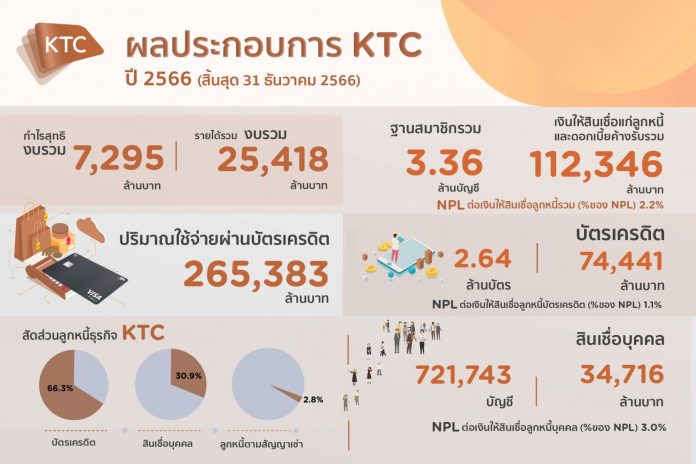

![สิงห์ เอสเตท โชว์กำไรโต 5 เท่า เตรียมเดินหน้าระดมทุนผ่านหุ้นกู้ชุดใหม่อายุ 1 ปี 9 เดือน ชูอัตราดอกเบี้ย [4.20]% ต่อปี เสริมความแข็งแกร่งธุรกิจอสังหาฯ สิงห์ เอสเตท ยื่น filing เตรียมเสนอขายหุ้นกู้ชุดใหม่ต่อประชาชนเป็นการทั่วไป จำนวน 1 ชุด อายุ 1 ปี 9 เดือนที่อัตราดอกเบี้ย [4.20]% ต่อปี โดยคาดว่าจะเสนอขายระหว่างวันที่ 19 – 21 ม.ค. 2569](http://www.thaimlmnews.com/wp-content/uploads/2025/11/1000162437-218x150.jpg)





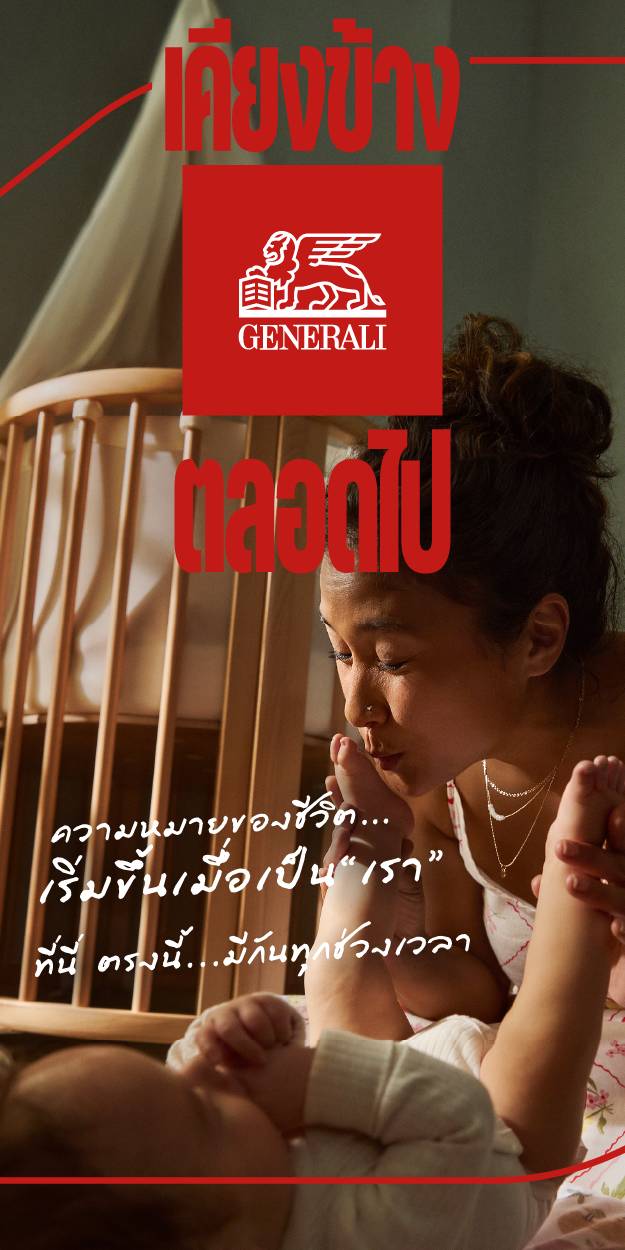
















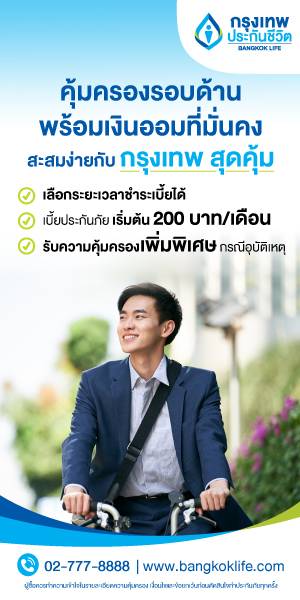



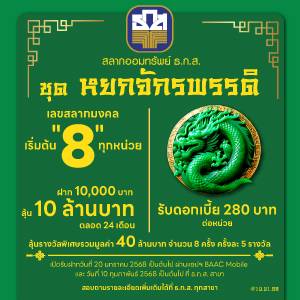
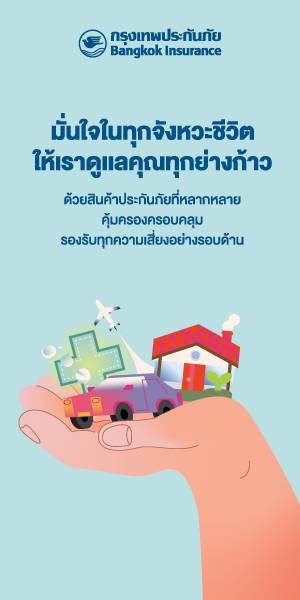
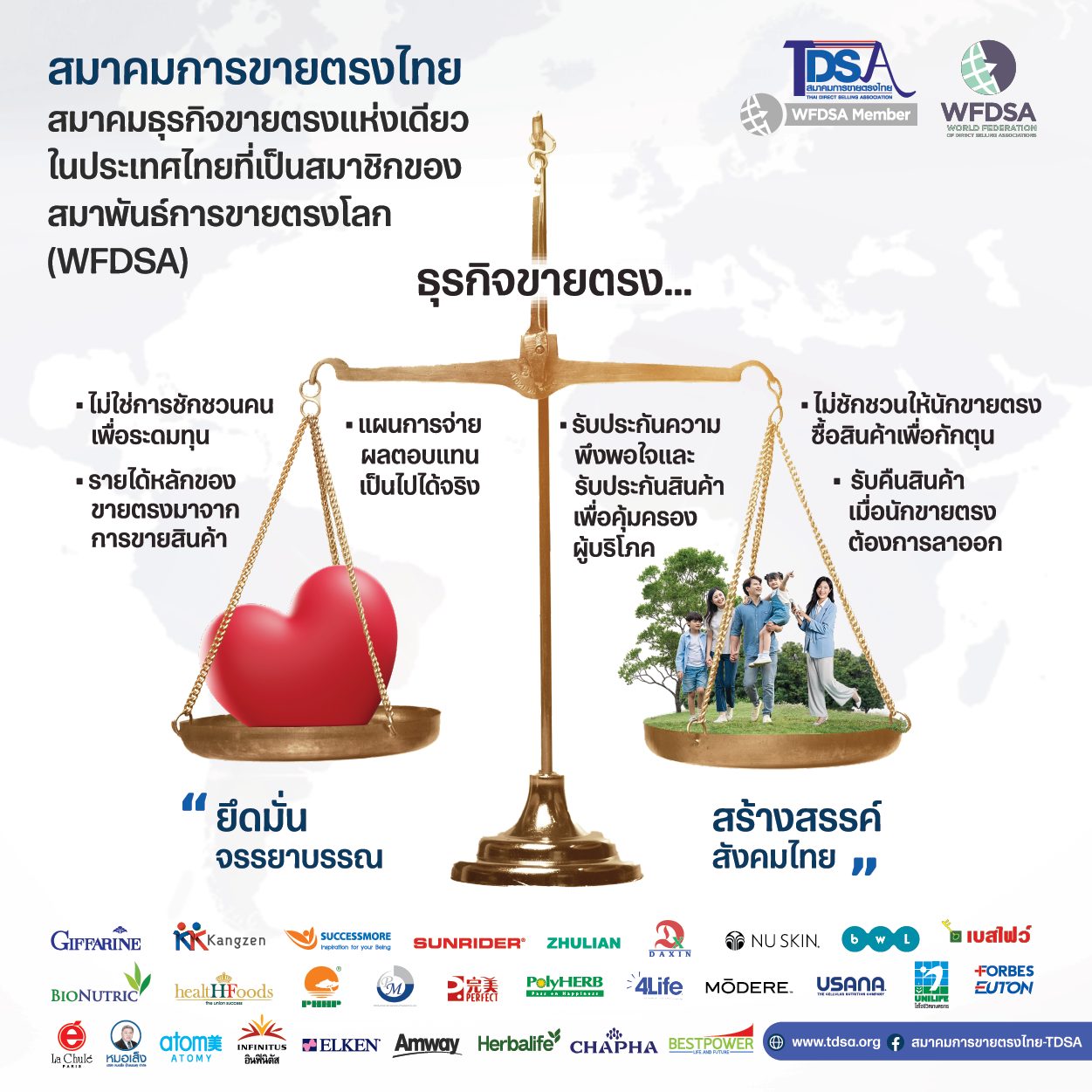
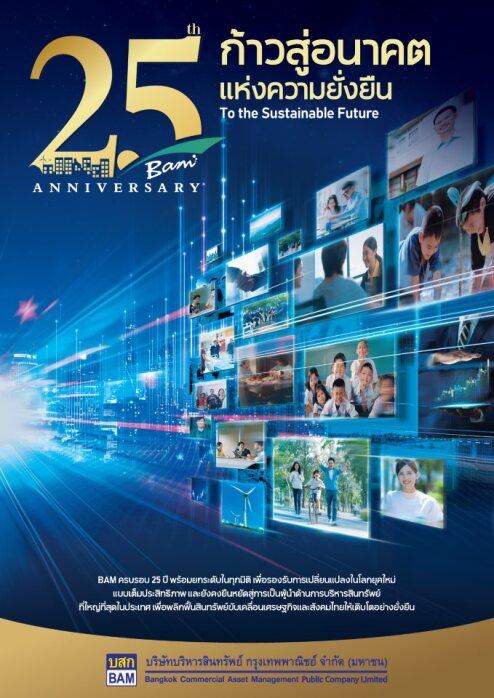




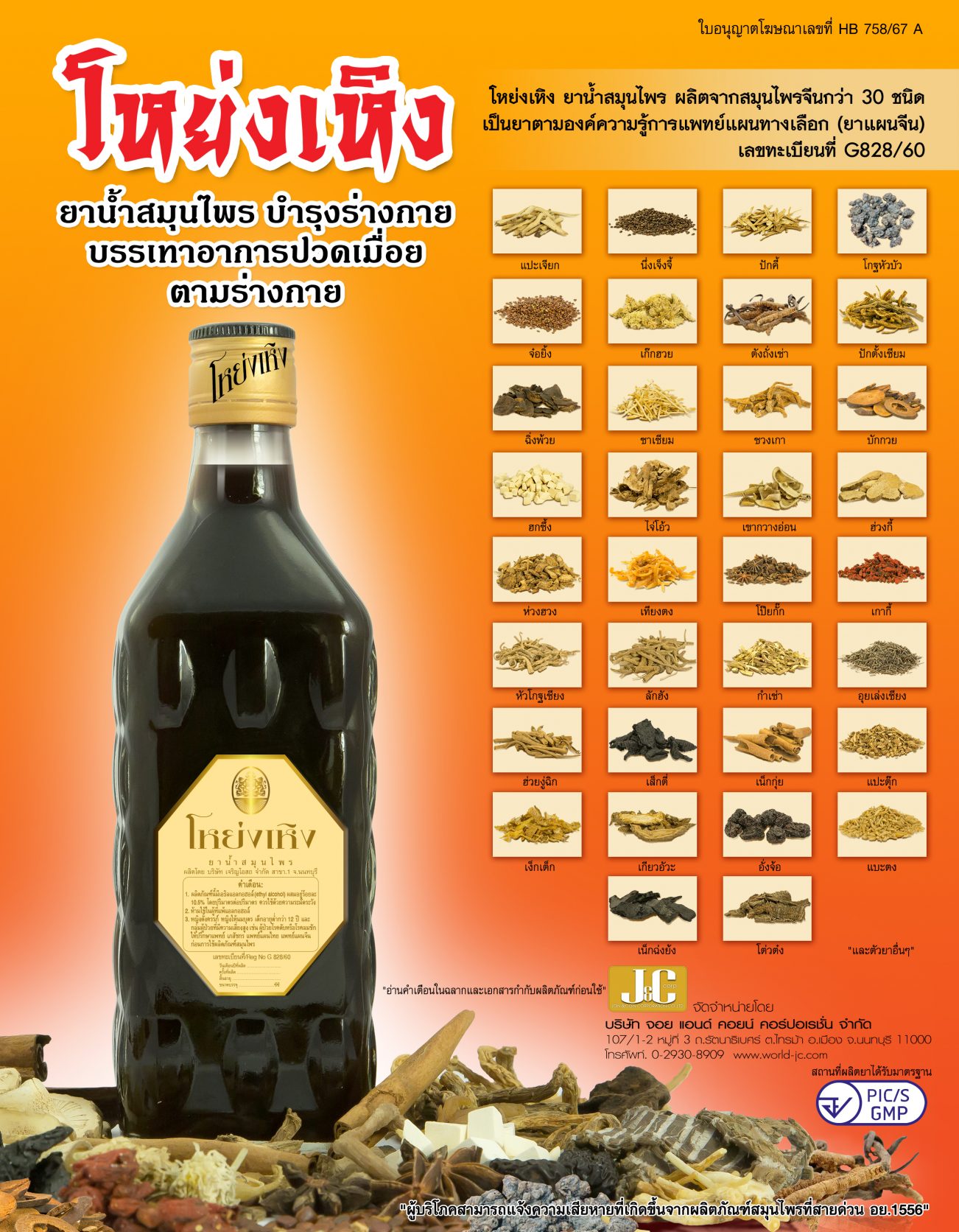










![สิงห์ เอสเตท โชว์กำไรโต 5 เท่า เตรียมเดินหน้าระดมทุนผ่านหุ้นกู้ชุดใหม่อายุ 1 ปี 9 เดือน ชูอัตราดอกเบี้ย [4.20]% ต่อปี เสริมความแข็งแกร่งธุรกิจอสังหาฯ สิงห์ เอสเตท ยื่น filing เตรียมเสนอขายหุ้นกู้ชุดใหม่ต่อประชาชนเป็นการทั่วไป จำนวน 1 ชุด อายุ 1 ปี 9 เดือนที่อัตราดอกเบี้ย [4.20]% ต่อปี โดยคาดว่าจะเสนอขายระหว่างวันที่ 19 – 21 ม.ค. 2569](http://www.thaimlmnews.com/wp-content/uploads/2025/11/1000162437-324x235.jpg)











![สิงห์ เอสเตท โชว์กำไรโต 5 เท่า เตรียมเดินหน้าระดมทุนผ่านหุ้นกู้ชุดใหม่อายุ 1 ปี 9 เดือน ชูอัตราดอกเบี้ย [4.20]% ต่อปี เสริมความแข็งแกร่งธุรกิจอสังหาฯ สิงห์ เอสเตท ยื่น filing เตรียมเสนอขายหุ้นกู้ชุดใหม่ต่อประชาชนเป็นการทั่วไป จำนวน 1 ชุด อายุ 1 ปี 9 เดือนที่อัตราดอกเบี้ย [4.20]% ต่อปี โดยคาดว่าจะเสนอขายระหว่างวันที่ 19 – 21 ม.ค. 2569](http://www.thaimlmnews.com/wp-content/uploads/2025/11/1000162437-100x70.jpg)